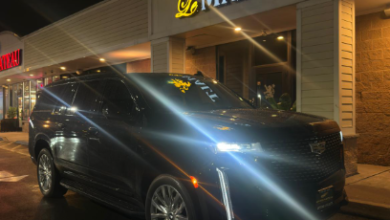A Complete Guide to Boat Marine Lights: Rules, Placement & Maintenance

When it comes to outfitting your vessel with reliable lighting, boat marine lights are essential for safety visibility and style. Whether you are navigating coastal waters or simply docking at dusk, having the right lights properly installed and well maintained is not optional. In this guide we cover everything you need to know about rules governing marine lighting placement and practical maintenance tips.
If you are shopping for boat marine lights from Marine Lighting Palm Beach or another trusted provider this article will help you make informed choices.
Rules Governing Boat Marine Lights
International and Local Regulations
Boat marine lights are regulated by international standards and local maritime authorities. The International Regulations for Preventing Collisions at Sea (COLREGs) mandate what type of lights vessels must carry. These include navigation lights such as red and green sidelights, a white stern light, and white masthead lights among others. Local rules may impose additional requirements based on size of the vessel and whether you operate on inland waterways or coastal areas.
Visibility Distances and Proper Color Use
Each light must meet specific minimum visibility range. For example the navigation lights must be visible for two nautical miles in some cases. The colors red green and white have precise meanings. Red indicates port side green indicates starboard and white is reserved for stern and masthead functions. Using incorrect colors or mixing light positions incorrectly places you at risk of penalties and collision danger.
When Lights Must Be On
Understanding when to use boat marine lights is as important as knowing what type to install. Rules require lights to be on from sunset to sunrise and during periods of restricted visibility such as fog rain or haze. Even in twilight conditions turning on required navigation lights is safer. Docking or anchoring at night also involves specific anchor lights. Knowing local regulations ensures compliance and safety.
See also: Understanding Card Rewards and How They Benefit Travelers
Correct Placement of Boat Marine Lights
Navigation Lights Placement
Navigation lights should be mounted in positions that match regulatory demands. The red and green sidelights typically go on the bow or at the side at least half way along the beam. The stern lights must be mounted at the stern and should show white light all around from right aft. Masthead lights go forward on the centerline of vessel as high as possible so that they are not obscured by structure or equipment.
Deck Dock Underwater Lights
Deck lights and dock lights serve both functional use and aesthetic value. They should be placed to illuminate walkways steps or dock edges without causing glare or blinding others. Underwater lights attached to transoms or hull sides should be positioned low enough to provide ambient glow into water but high enough to avoid damage from marine growth or debris. Marine Lighting Palm Beach offers underwater LED units designed for mounting at proper heights to balance effect with durability.
Courtesy Lighting and Accent Lighting
Courtesy lights are placed in areas like cockpit corners companionway ramps and swim platforms. These lights must be low intensity warm colored so that they help without impacting night vision. Accent lighting may include RGB or color changing strips but must not interfere with required safety lights. Always route wiring and aim angles so that these lights do not obscure crucial navigation signals.
Maintenance Best Practices for Boat Marine Lights
Regular Inspection and Cleaning
Salt water humidity and marine growth are enemies of boat marine lights. Inspect fixtures regularly for corrosion cracks or haze in lens covers. Clean lenses with fresh water and mild soap. Avoid abrasive materials that scratch. Use marine grade cleaners if needed. Marine Lighting Palm Beach recommends quarterly inspections especially in high salt environments.
Check Wiring Seals and Connections
Water infiltration through wiring can lead to short circuits or corrosion. All connectors should be sealed waterproof marine grade. Use heat shrink or specialized marine sealants around joints. Ensure wiring runs are secured and protected against chafing. Replace any wiring that shows green or white crust as those are signs of corrosion that can worsen.
Bulb or LED Replacement and Power Source Health
Boat marine lights often use LEDs because of low power draw long life and toughness. However even LEDs will fail with time or from heat buildup. Replace any bulb or LED module showing flicker dimming or color change. Also check the vessel battery and charging system to ensure stable voltage. Poor power supply reduces lifespan of lights and may cause intermittent operation that compromises safety.
Tips for Choosing Quality Boat Marine Lights
Consider Material and IP Rating
When purchasing lights for marine settings pay attention to materials such as powder coated aluminum or marine grade stainless steel. The IP rating is key. IP67 IP68 are common ratings indicating good water tightness. For underwater lights you want lights rated for continuous immersion. Marine Lighting Palm Beach stocks lighting fixtures with ratings suited for varied marine conditions.
Energy Efficiency and Light Output
LED technology has transformed marine lighting. LEDs consume less power and give off more light per watt. When choosing lights consider lumens rather than simply wattage. Bright enough to be seen but not so bright that they cause glare. Look for lights with efficient heat sinks to prolong LED life.
Matching Aesthetic with Function
Boat marine lights are both functional tools and style statements. Finish colors light temperatures and design shapes matter. Warm white tones help preserve night vision cool whites often offer crisp visibility underwater. RGB or color changing lights can add flair especially aboard luxury or leisure craft. Ensure that decorative lighting does not violate safety lighting rules or distract other boaters.
Conclusion
Boat marine lights are a vital component of any vessel. Understanding the rules governing what lights are required when navigating visibility and color issues is essential for safety and compliance. Correct placement ensures those lights do their job without interference. Regular maintenance keeps fixtures performing and safe over time. Whether you purchase from Marine Lighting Palm Beach or another marine lighting specialist making well informed choices will help you enjoy your time on the water with confidence and style.



